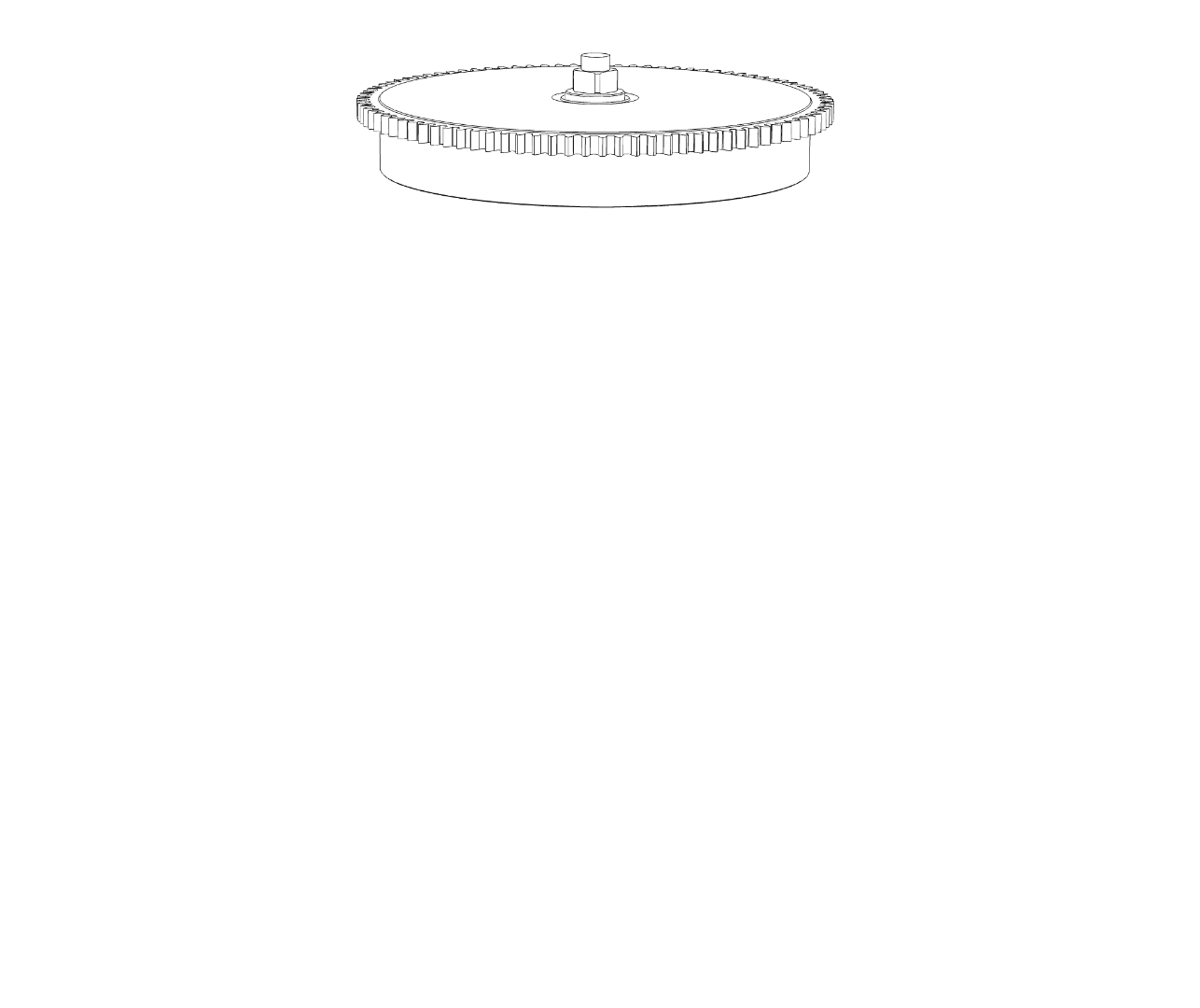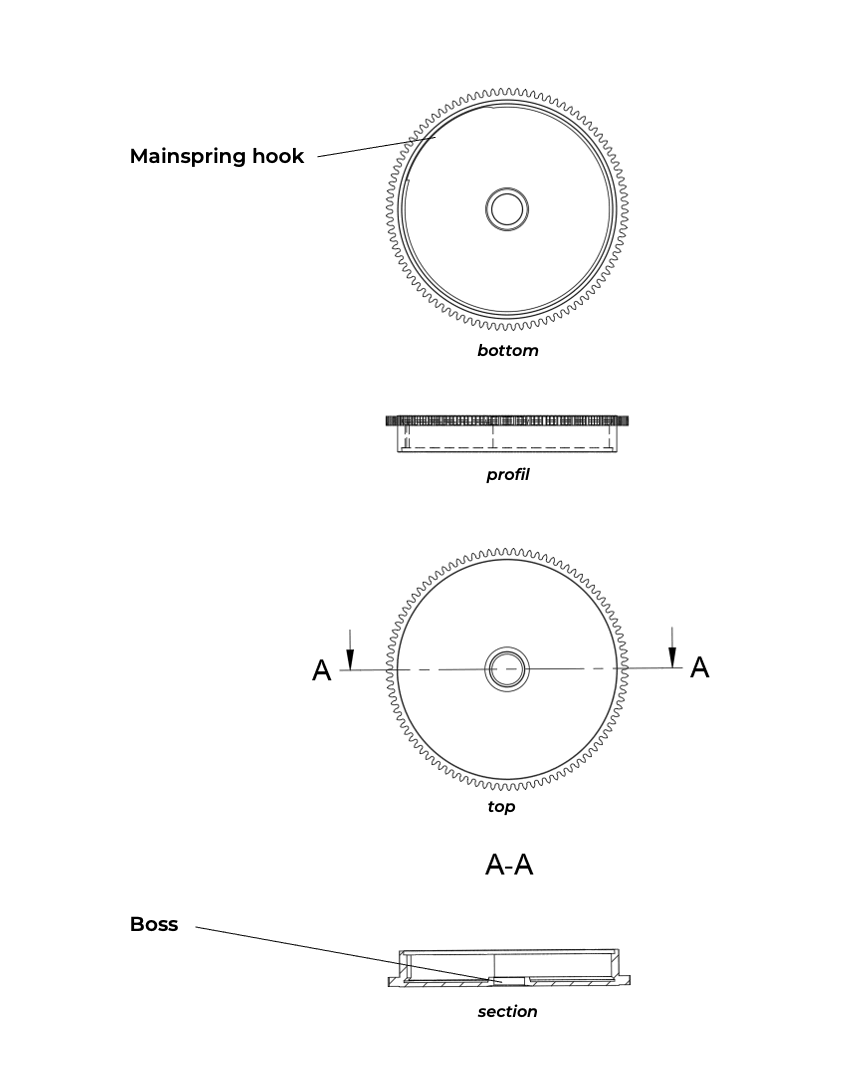BARREL DRUM
Artisanal production of a barrel drum
Video: Artisanal production of a barrel drum
Figure 1: Exploded view of the barrel (motor organ)
Figure 2: Plan or a barrel drum (manual winding)
The barrel drum is one of the four components that make up the barrel, the driving organ of a mechanical watch. It is a hollow cylinder made of brass or nickel silver, inside which the mainspring is housed. A peripheral toothing occupies approximately one-fifth of the total height of the drum. This toothing engages with the centre pinion leaves and thus transmits the energy from the barrel to the rest of the movement.
The centre of the barrel drum is pierced to allow the barrel arbor to pass through. The arbor must remain free within this hole so that it can rotate between its pivots during the winding of the watch, while the drum itself rotates around the arbor during unwinding (the watch’s running phase). A raised boss is present inside the drum around the arbor hole, and a similar boss is found inside the barrel cover. These two bosses control the endshake (axial play) of the barrel drum and help reduce friction between the arbor and the drum.
A recess is milled into the interior wall of the drum, allowing the outer hook of the mainspring (the clamp) to catch and drive the drum in its rotational movement.
The groove for the drum cover is machined with a slight angle so that the cover can snap securely into place.
The visible face of the drum offers a large surface that is traditionally decorated with sunray brushing or snailing. Finally, the barrel drum, like its cover, is protected from oxidation with either a galvanic treatment (such as gilding or rhodium plating) or a PVD coating.
The artisanal production of a barrel drum can be carried out entirely using a lathe (type 70). After turning the external diameters (the outer diameter of the drum and the overall diameter including the toothing) to the correct height, the interior of the drum can be hollowed out. During these operations, care must be taken to maintain the correct diameter and height of the boss, as well as the required depths and diameters.
The groove intended to accommodate the barrel cover can be created simply by tilting the axis of the tool slide holding the chisel. The recess for the clamp of the mainspring can then be made using the lathe’s milling attachment and a cutter with an appropriate profile.
While most artisans prefer to cut the toothing using a dedicated gear-cutting machine, it is also possible to carry out this operation on the lathe using the milling attachment. The drum is then reversed in the collet of the lathe, and the final face is trued, bringing the overall thickness to its final dimension.
Finally, the barrel drum may be decorated (circular graining, sunray brushing, snailing, etc.) using the lathe or dedicated machines, before receiving its surface treatment (galvanic or PVD).
Due to its cylindrical shape and dimensions, bar turning is the ideal solution for producing barrel drums in series, regardless of the required quality level or production quantity. Except for decorative finishing, all operations, including gear tooth cutting, can be carried out on an engine-turning lathe.
Finally, the barrel drum can be decorated (circular graining, sunburst finish, snailing, etc.) using dedicated machines before receiving its surface treatment (galvanic or PVD).


